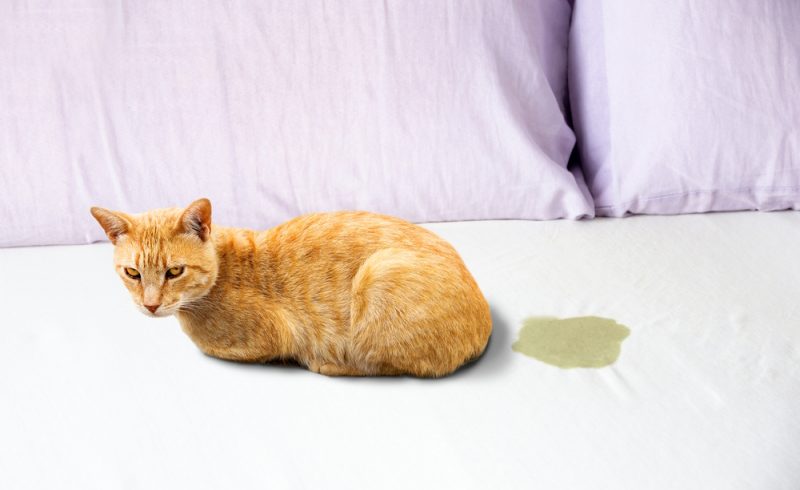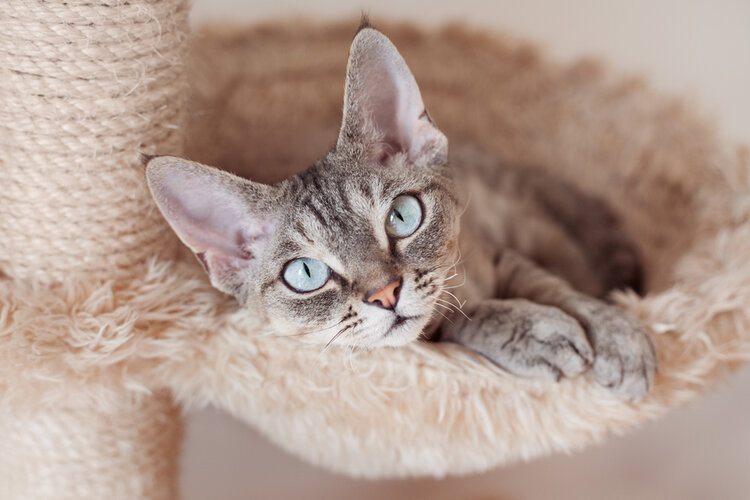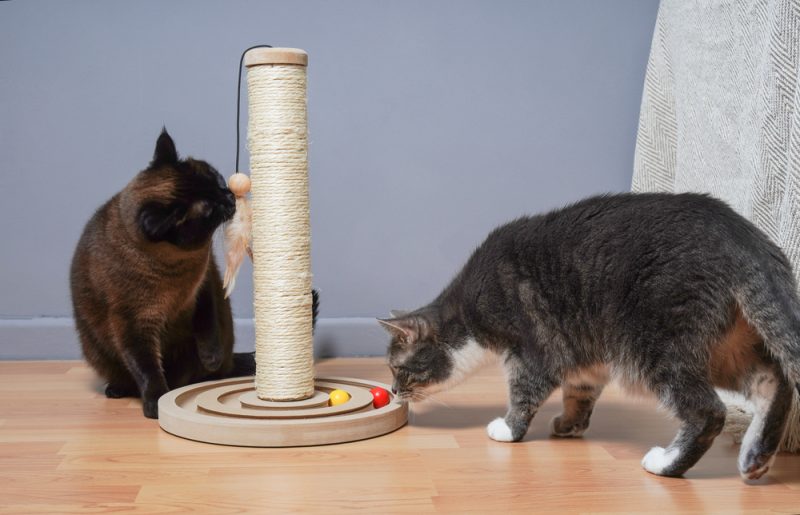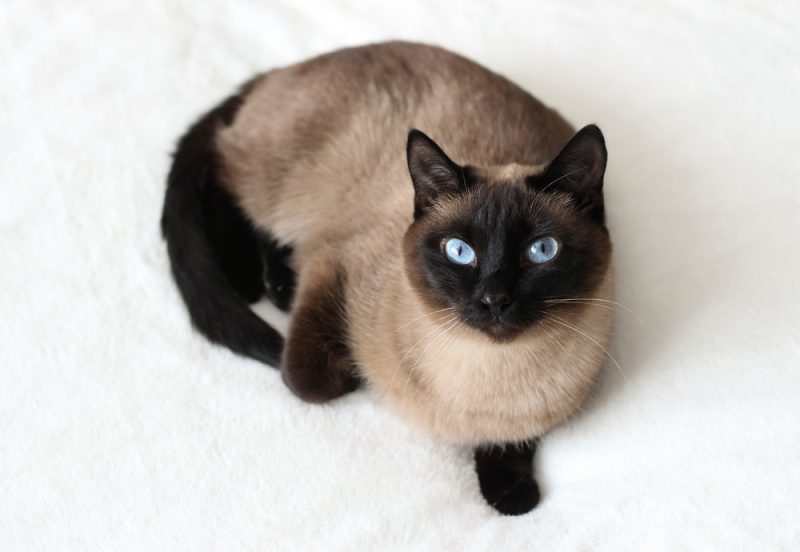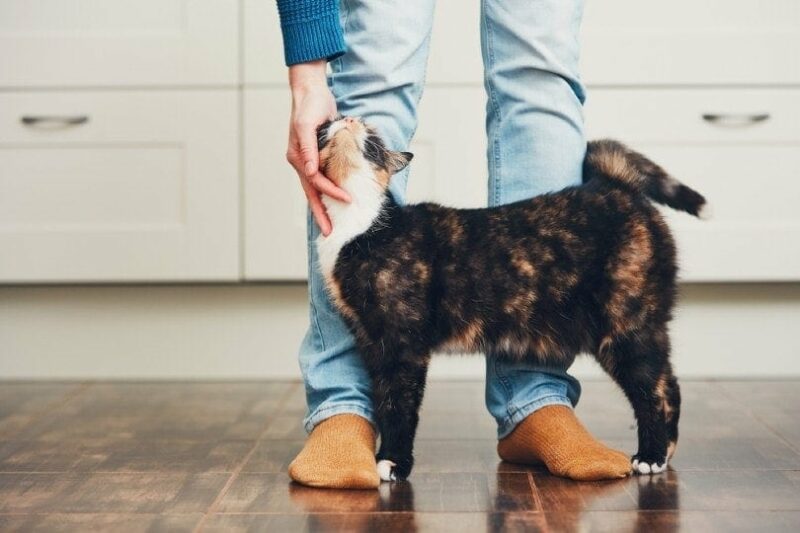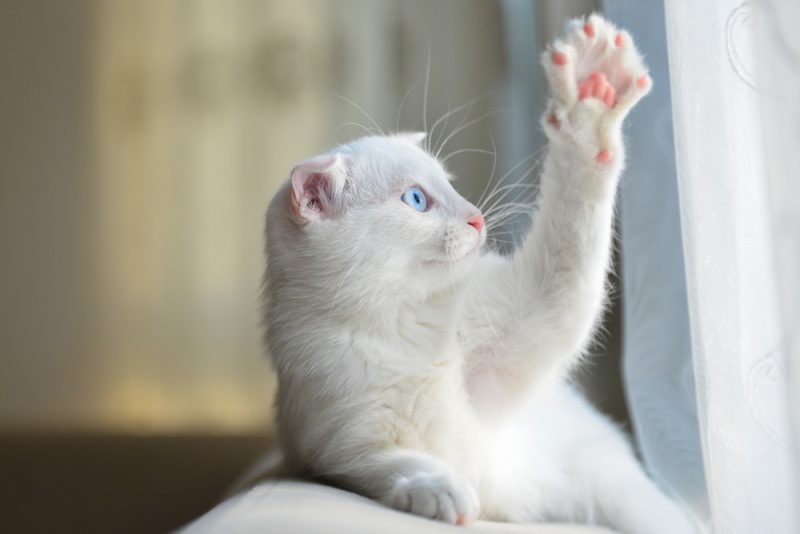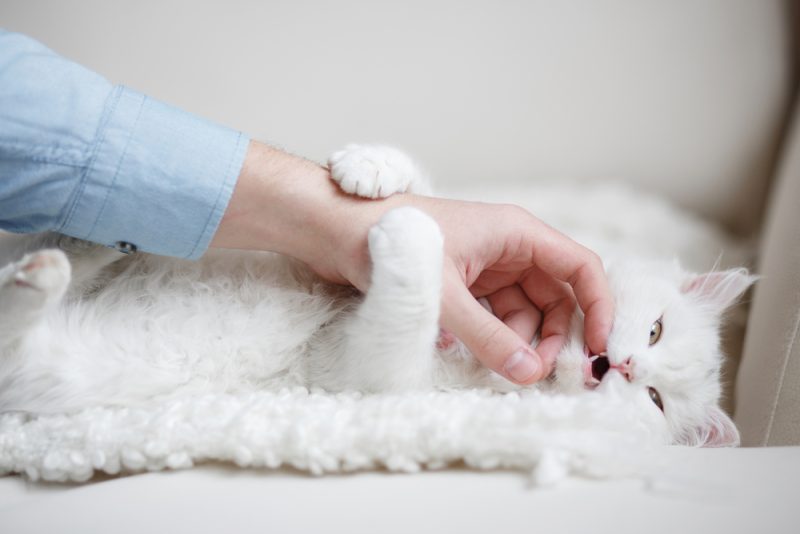If your cat has occasional accidents on your bedding, you already know that the smell of cat pee is extremely hard to get out, particularly once it’s dry. If you have tried and failed to get cat urine out of your comforter, we’re here to help!
You can remove the cat urine odor from virtually any washable fabric. While we’ll show you how to get it out, it’s also essential to deal with any health or behavioral issues that are causing your cat to pee on your bed in the first place.

- Paper towels
- White vinegar
- Oxygen bleach or Oxi-Clean
- Baking soda
- Enzyme detergent
Our Favorite Enzyme Cleaner
The Hepper Advanced Bio-Enzyme Pet Stain & Odor Eliminator Spray is our favorite all-purpose enzyme cleaner. It kills harmful bacteria and permanently removes even the worst kitty stains and smells, leaving your home fresh and clean! Click here to learn more about this amazing product and get yourself a bottle.
| Image | Product | Details | ||
|---|---|---|---|---|
| Best Enzyme Spray |
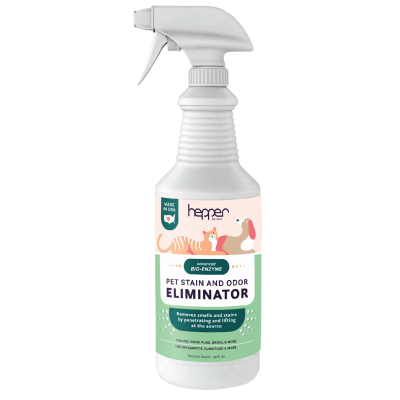
|
Hepper Advanced Bio-Enzyme Pet Stain & Odor Eliminator Spray |
|
Check Price |
At Catster, we’ve admired Hepper for many years and decided to take a controlling ownership interest so that we could benefit from the outstanding products of this cool cat company!
Pre-treatment
If you have cat urine on your comforter, don’t throw it in the washing machine. Urine has a way of spreading odors. If you add the comforter to your laundry, you’ll likely find that the smell has penetrated the rest of the load. When you put your comforter in the washing machine, put it in by itself. However, it’s best to pre-treat the stain (and smell) for the best results.
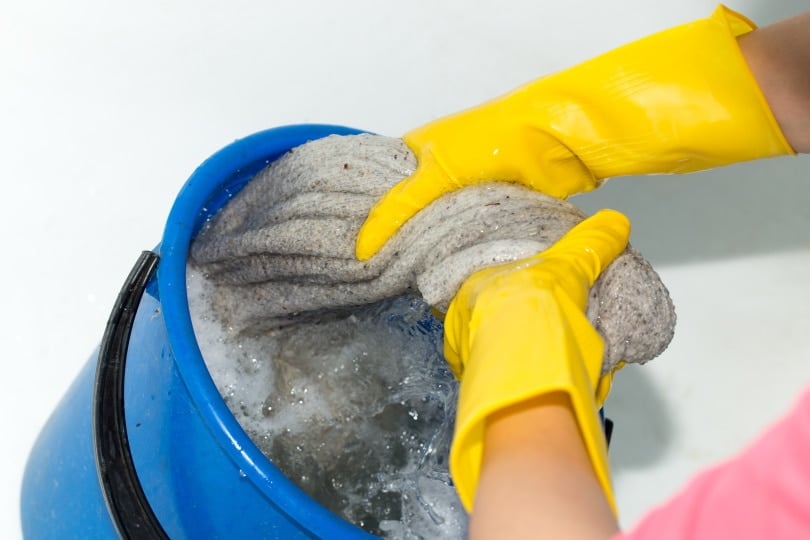
- Rinse the urine spot with cool water and blot dry with a paper towel. Don’t scrub the stain, which will drive the smell deeper into the fabric’s fibers. Your goal is to remove as much urine as possible before starting the cleaning process.
- Spray the comforter with an enzyme spray and allow that to sit before moving on to the next step.
- Fill a sink or bucket with water and oxygenated bleach, such as Oxi-Clean. Don’t use chlorine bleach, as it can cause significant damage to your comforter. Soak the urine stain in the mixture for 1–4 hours.

Two-Stage Washing Process
For the best results at removing cat pee odor, use a two-stage cleaning process to remove it. The first stage of this process is the vinegar wash.
Stage 1
1. Create the Mix
Mix white vinegar and water in a 1:1 ratio. Coat the urine stain thoroughly with the mixture and allow it to sit for a few minutes.

2. Add baking soda
Sprinkle the area with baking soda. While this step is optional, the baking soda aids the vinegar in absorbing odors.
3. Wash on a washing machine
Wash the comforter in your washing machine with cold water. Do not use hot or warm water since can set the stain and the smell. Do not use laundry detergent for this step.
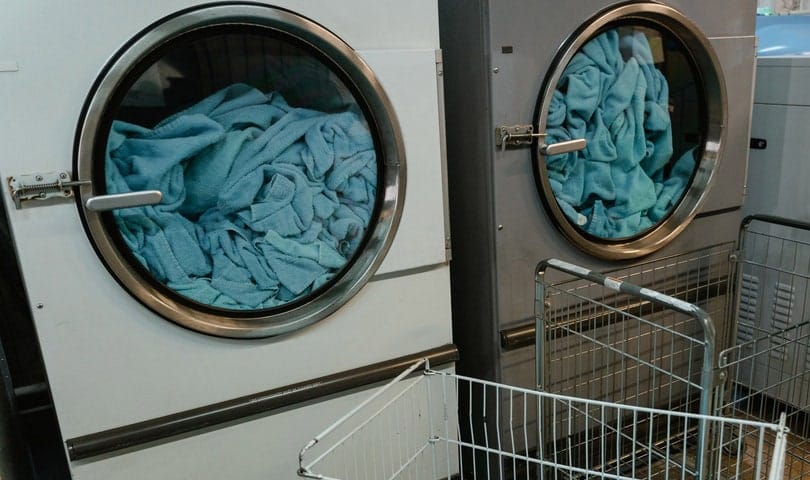
4. Air-dry
Air-dry the comforter. If you have to dry it indoors, it can take 24 hours. If you have the ability to do so and the weather is conducive, drying your comforter outdoors will be faster and make it easier to remove the smell. Do not use a clothes dryer; the heat will set in any remaining smell.

Stage 2
The second stage of the washing process should be completed after your comforter is completely dry from the vinegar wash. This step is a more traditional washing process, and most of the cat pee smell should be removed.
5. Wash in cool water
Wash your comforter in cool water, using an enzyme-based detergent for removing organic stains. Unlike traditional laundry detergent, enzyme detergent contains enzymes that essentially “eat” the bacteria-causing odors. Many cold-water detergents contain enzymes, but read the label to be sure.
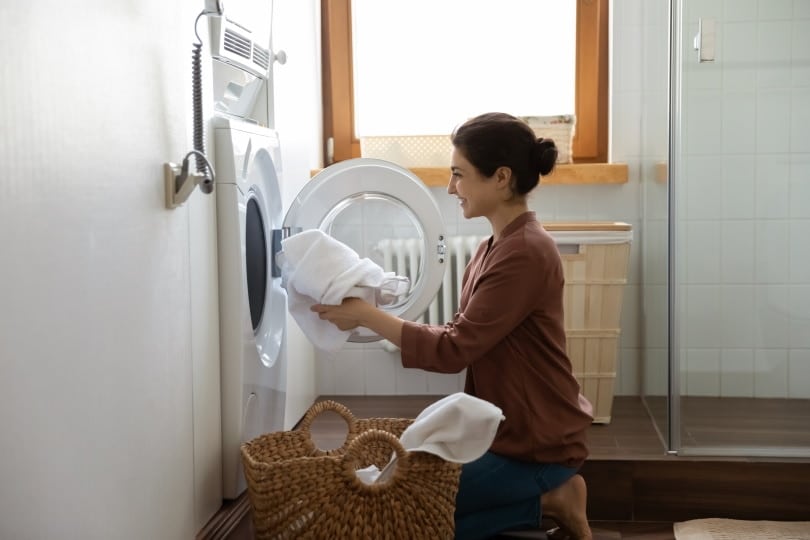
6. Air-dry again
Air-dry your comforter again. This is because you are going to “sniff-test” your comforter once it’s dry. If there is any remaining odor, you will restart the pre-treat and wash process.
You can do it as many times as needed to get the smell out, but only if you do not put it in the dryer. Once you’ve used heat to dry your comforter, getting the smell out is much more difficult.
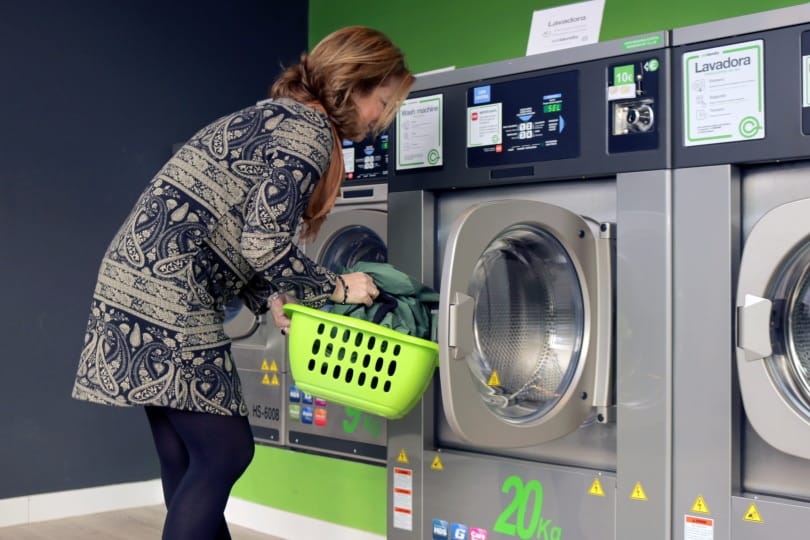
If the cat urine has dried on your comforter, it’s possible that you will have to repeat the process two to three times to remove the smell entirely.

Are You Still Smelling Cat Pee?
If your comforter has come out smelling fresh, but you can still detect the smell of cat pee in the room, it’s time to do some detective work. It’s possible that if your cat marked your comforter.
Arming yourself with a blacklight is the simplest way to hunt down urine stains. They will glow under the blacklight. Then, you can use chalk or a sticky note to mark the problem areas. Once these are identified, use an enzyme cleaner to thoroughly clean the area so you can enjoy a fresh-smelling home.
At Catster, we’ve admired Hepper for many years and decided to take a controlling ownership interest so that we could benefit from the outstanding products of this cool cat company!

Give Your Cat a Health Check
To avoid more accidents in the future, it’s essential to address the problem. Health and behavioral issues can cause your cat to pee outside the litter box. Address any possible health issues first by taking your cat to the vet. You can address behavioral issues once you’ve ruled out a physical cause of your cat’s litter box avoidance.
Separation anxiety in cats is a common reason for marking outside the litter box. Cats with this condition often mark bedding or personal items to relieve their anxiety. There are many things you can do to fix the problem and avoid more accidents.
Featured Image Credit: cunaplus, Shutterstock
